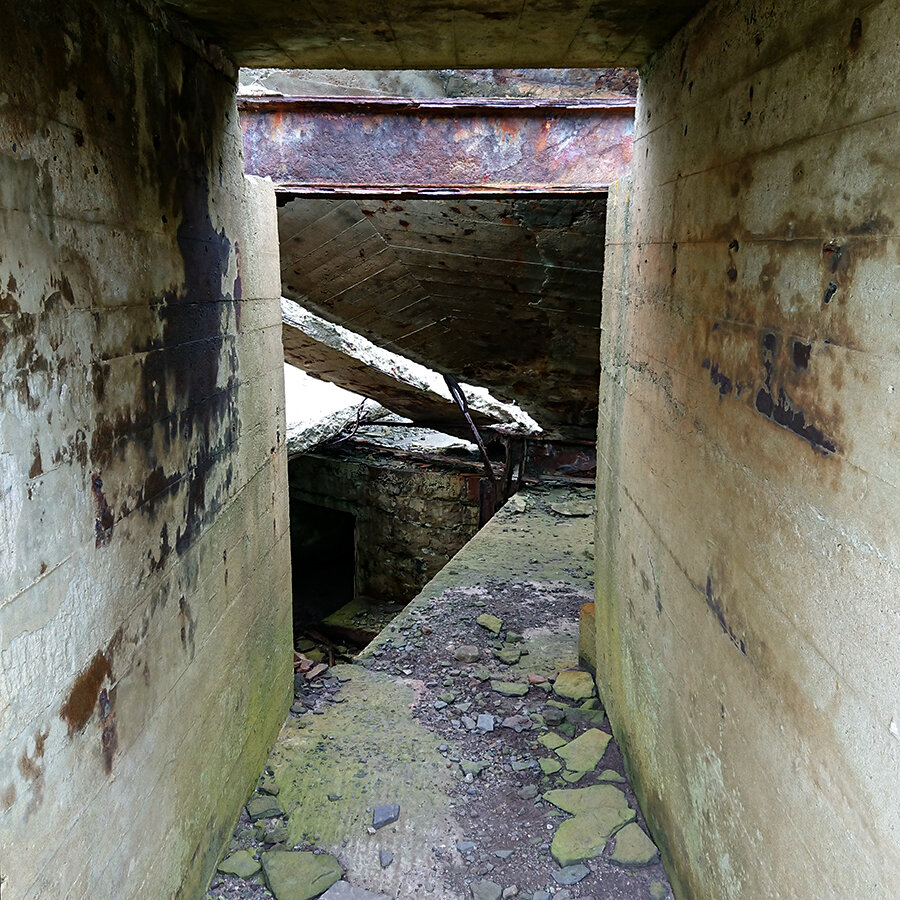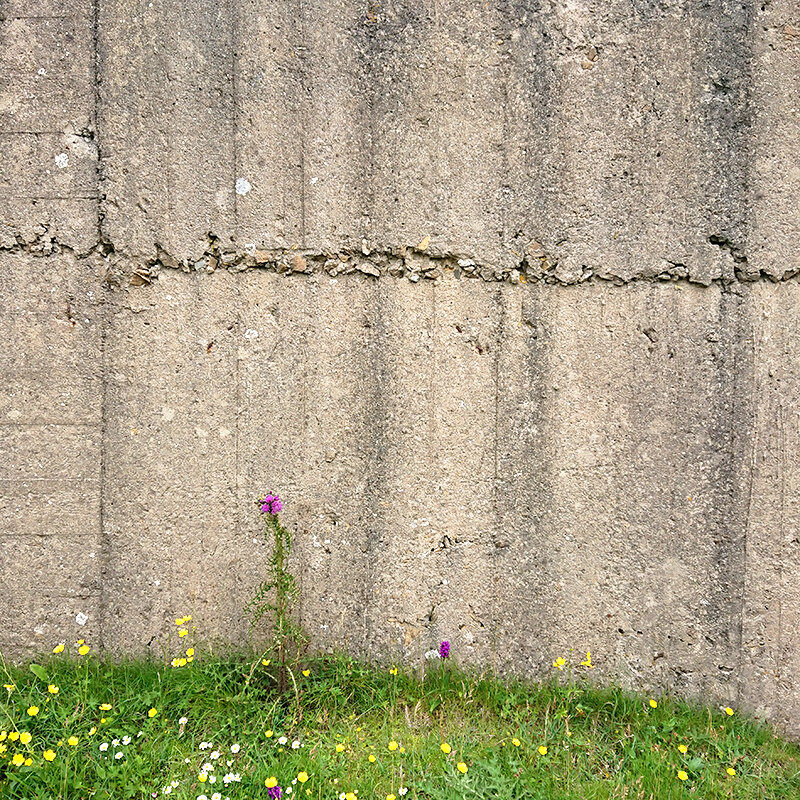Orkney Day 3 - East Mainland
Observation point at Hoxa Battery, South Ronaldsay. The primary role of this battery was 'to prevent hostile or suspicious vessels entering into Scapa Flow by way of Hoxa Sound'.*
In the south East Mainland of Orkney today, sites visited focused on the defence of Scapa Flow. There are a whole range of sea defences across the area, intended to protect and restrict access to the base of the Home Fleet.
The misty day and white overcast skies gave a strange look to views out to sea, the horizon indistinct:
‘Out there then. Lonely, flat, old…Eerie for it’s absence of feature’.
- ‘Ness’, Robert Macfarlane and Stanley Donwood, 2018
The constructions here are both above ground and subterranean. They're all slowly decaying as the earth reclaims.
Inside a WWI magazine (on the same site at Hoxa), layers of graffiti has built up, just like on the Brodgar Stones.
Collapsed gun emplacement structure at Hoxa Battery.
Nature's patterns decorate the austere walls, transforming surfaces.
Nature also surrounds the ruins - orchids and many other beautiful wild flowers grow in swathes in the fields around the battery.
Balfour Battery - overlooking Hoxa Sound and an entrance to Scapa Flow.
Balfour Battery is one of the most complete 6 pounder batteries to have survived in Orkney (Dorman, 1996). The atmosphere is eerily quiet, but seabirds cries break the silence and echo around the concrete walls.
The camp at the Cara, South Ronaldsay is almost lost amongst more recently built houses. Some of these buildings and the Observation Point have been used as sheds.
At the Ayre of Cara, a blockship is being buried and destabilised by the sifting sands. The dunes in this photo are staggeringly ‘human made’ - once the Churchill Barrier was constructed, sand quickly build up as the tidal flow was changed forever.
* Quoted in: Orkney Coastal Batteries 1914-1956, Jeff Dorman, 1996.









